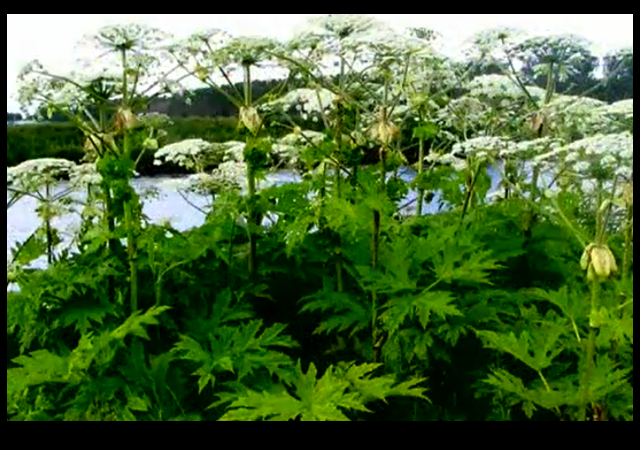Plant That Causes Serious Burns and Alters Human DNA Spreads Across New York
A dangerous and invasive plant that causes serious burns and alters human DNA has been spreading across New York, causing concern among residents and authorities. The plant, known as Giant Hogweed, contains toxic sap that can cause severe skin burns and blisters upon contact, as well as long-term damage to DNA.
The Spread of Giant Hogweed in New York
Giant Hogweed, which is native to the Caucasus region of Eurasia, was introduced to North America as an ornamental plant in the early 20th century. It has since spread rapidly across the continent, including to New York, where it has been found in various locations, from parks and gardens to roadsides and riverbanks.
The plant can grow up to 14 feet in height and has large, umbrella-shaped clusters of white flowers. Its stems are hollow and covered in purple blotches, while its leaves are deeply incised and can reach up to five feet in width. Giant Hogweed poses a serious threat to both humans and the environment, as it can outcompete native plants and cause harm to those who come into contact with it.
The Dangers of Giant Hogweed
One of the main dangers of Giant Hogweed is its toxic sap, which contains chemicals known as furanocoumarins that cause phytophotodermatitis. This condition occurs when the sap is activated by sunlight, leading to severe skin burns and blisters that can take weeks to heal. In some cases, the burns can result in permanent scarring and photosensitivity, making the affected area more susceptible to sunburn and skin cancer.
Moreover, the furanocoumarins in Giant Hogweed sap can also alter human DNA, increasing the risk of mutations and potentially leading to long-term health effects, including cancer. This makes the plant particularly dangerous for children, who are more likely to come into contact with it while playing outdoors, as well as for pets and wildlife that may inadvertently spread its seeds to new areas.
Preventing and Managing Giant Hogweed Infestations
To prevent the spread of Giant Hogweed and protect against its dangers, it is crucial for residents and authorities in New York to be informed about the plant and take appropriate measures to manage infestations. This includes wearing protective clothing, such as gloves and long sleeves, when handling the plant, as well as avoiding direct skin contact with its sap and washing thoroughly if exposed.
In addition, efforts should be made to identify and remove Giant Hogweed from public areas and private properties, using methods that minimize the risk of spreading its seeds. This may involve cutting the plant at the base before its flowers have a chance to set seed, as well as disposing of its remains in a safe and controlled manner to prevent further contamination.
Conclusion
The spread of Giant Hogweed in New York poses a serious threat to both human health and the environment, requiring immediate action to prevent its further expansion. By raising awareness about the dangers of this invasive plant and taking proactive measures to manage infestations, residents and authorities can help protect themselves and their communities from its harmful effects.
FAQs
Q: How can I identify Giant Hogweed?
A: Giant Hogweed can be identified by its large size, umbrella-shaped clusters of white flowers, purple-blotched hollow stems, and deeply incised leaves that can reach up to five feet in width.
Q: What should I do if I come into contact with Giant Hogweed sap?
A: If you come into contact with Giant Hogweed sap, wash the affected area immediately with soap and water, cover it to protect against sunlight, and seek medical attention if severe skin burns or blisters develop.
Q: How can I help prevent the spread of Giant Hogweed?
A: To prevent the spread of Giant Hogweed, avoid direct skin contact with the plant and its sap, wear protective clothing when handling it, and take steps to identify and remove infestations from your property or community.




